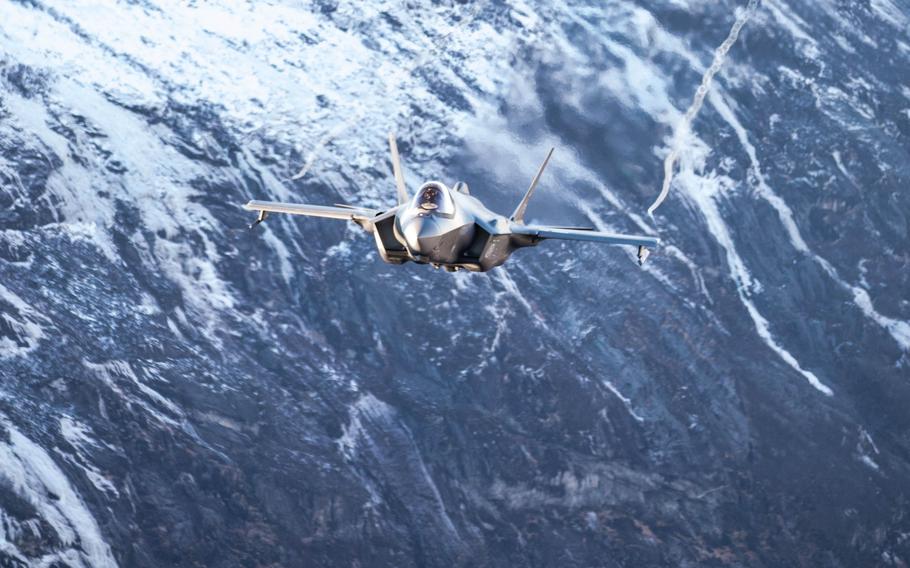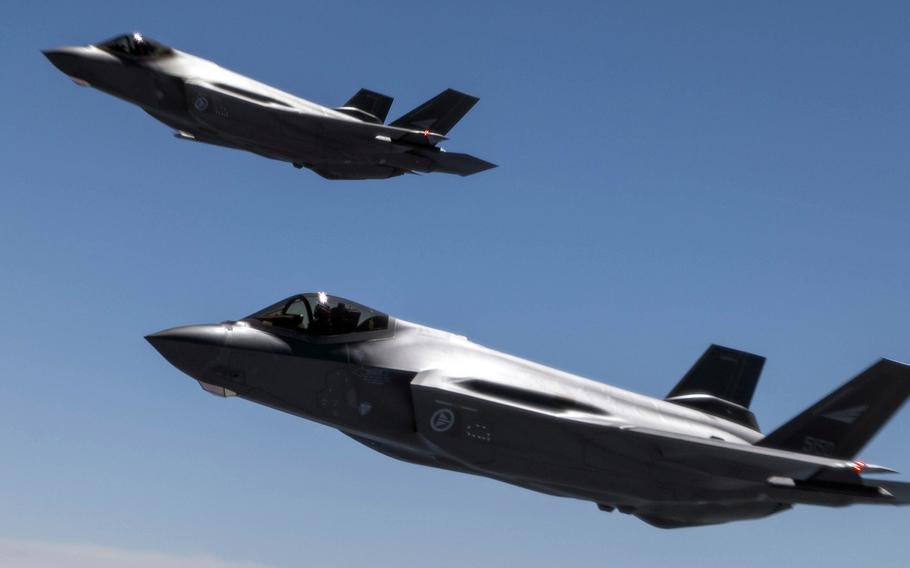
Two Norwegian F-35s stationed in Poland were scrambled Jan. 15, 2025, in response to Russian drones that were flying over Ukraine toward Poland. (X/NATO Air Command)
STUTTGART, Germany — A new NATO-led air defense mission in Poland sprang into action this week, scrambling F-35 jets in response to a potential Russian drone incursion, the American general who serves as the alliance’s top military commander said.
Along with a separate effort launched Tuesday to track suspicious Russian activity in the Baltic Sea, the maneuvers Wednesday involving Norwegian jets are putting European militaries into a leading role, U.S. Army Gen. Christopher Cavoli said.
The Norwegian F-35s, based in Poland, were scrambled after allied air defense alert systems tracked Russian drones that were flying over Ukraine and headed toward Poland, Cavoli said Thursday after two days of high-level talks in Brussels.
“Our airborne early-warning and our other systems detected these. ... They were able to get a good lock on these drones and were prepared to deal with them should they have come into NATO airspace,” said Cavoli, NATO’s supreme allied commander in Europe.
The gathering of allied defense chiefs put a spotlight on recent efforts to shift certain military command responsibilities in Europe from the United States to NATO.
While the imminent return of U.S. President-elect Donald Trump to the White House wasn’t characterized as the impetus for such moves, putting allies into a more prominent position is in line with Trump’s often-stated view that European countries need to shoulder more of the security burden on the Continent.
“This is an alliance that is not a one-trick pony,” Cavoli said. “This is an alliance that is capable of doing things and is rapidly gaining the ability to do more and more.”

Norwegian air force F-35 Lightning IIs fly over U.S. European Command's area of responsibility in June 2024. Two Norwegian F-35s stationed in Poland were scrambled Jan. 15, 2025, in response to Russian aircraft on NATO's eastern flank. (Emily Farnsworth/U.S. Air Force)
Last week, NATO’s military headquarters assumed command of air defense efforts in Poland that are focused on securing logistics nodes used to supply military equipment to Ukraine.
The initiative, which has involved American Patriot missile defense units, was previously commanded by the United States. In addition, an alliance-led headquarters in Germany has taken over coordination of support for Ukraine from U.S. forces.
Cavoli declined to speculate on what Trump’s approach to NATO will look like, saying it would be irresponsible to do so. However, he said he’s confident that the alliance as a whole will keep up the assistance.
“We put into place procedures and institutions that are designed to endure, so I’m not very worried about NATO’s continuous contribution in support for Ukraine,” he said.
Meanwhile, the new NATO Baltic Sentry mission, which began Tuesday in response to the damaging of undersea communication and energy cables, is being done without U.S. military assets, Cavoli said.
The mission involves naval surveillance drones, warships, submarines and aircraft. It is aimed at better tracking Russia’s so-called shadow fleet of ships, which are believed to have been involved in sabotaging critical undersea cables in Europe.
“There’s not a single U.S. contribution to that,” Cavoli said.